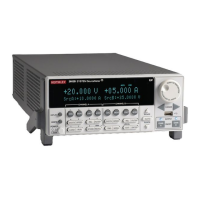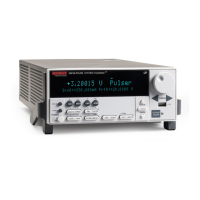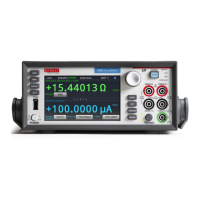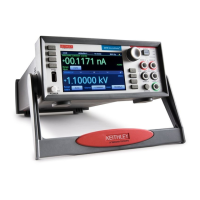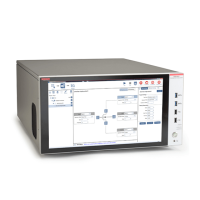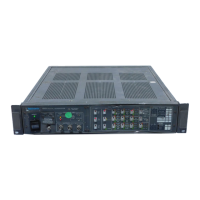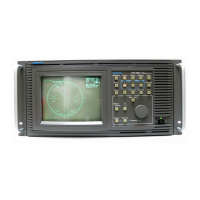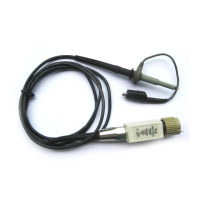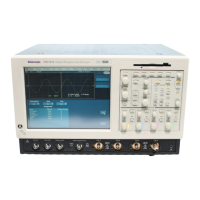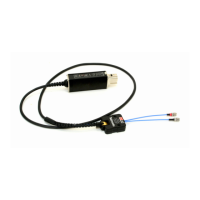1. Measure range coupled to source range when simultaneously sourcing and measuring current.
2. As measured by precision digital multimeter. Use closest possible value and modify reading limits
accordingly if necessary. See Measurement limit calculations (on page 10-4).
8. Turn the output off and change connections as shown adding the 0.5 Ω 250 W resistor (see the
figure titled "Connections for 1.5 A and 3 A current ranges" in Current source accuracy (on
page 10-6)).
9. Select the DMM volts function.
Repeat steps 4 through 6 for the 3 A range (2601B, 2602B, or 2604B) or 1.5 A range (2611B,
2612B, 2614B, 2634B, 2635B, or 2636B). Calculate the current from the DMM voltage reading
and characterized 0.5 Ω resistance value.
10. For the 2602B, 2604B, 2612B, 2614B, 2634B, or 2636B, repeat the above procedure for the
other channel.
Model 2634B, 2635B, and 2636B current measurement accuracy 100 pA
to 100 nA ranges
A suitably guarded and characterized 1 GΩ resistance standard, such as the Keithley
Instruments Model 2600-STD-RES, is necessary for the following measurements. Step-by-step
procedures and connection diagrams for verifying the current measurement accuracy for the low
current ranges are included with the 2600-STD-RES. The general process entails forcing a
characterized voltage across the 1 GΩ resistor and comparing the 2634B, 2635B, or 2636B
measured results against the standard resistance and voltage derived current.
1. Characterize the appropriate ±V source values with the DMM according to the following table.
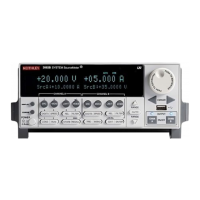
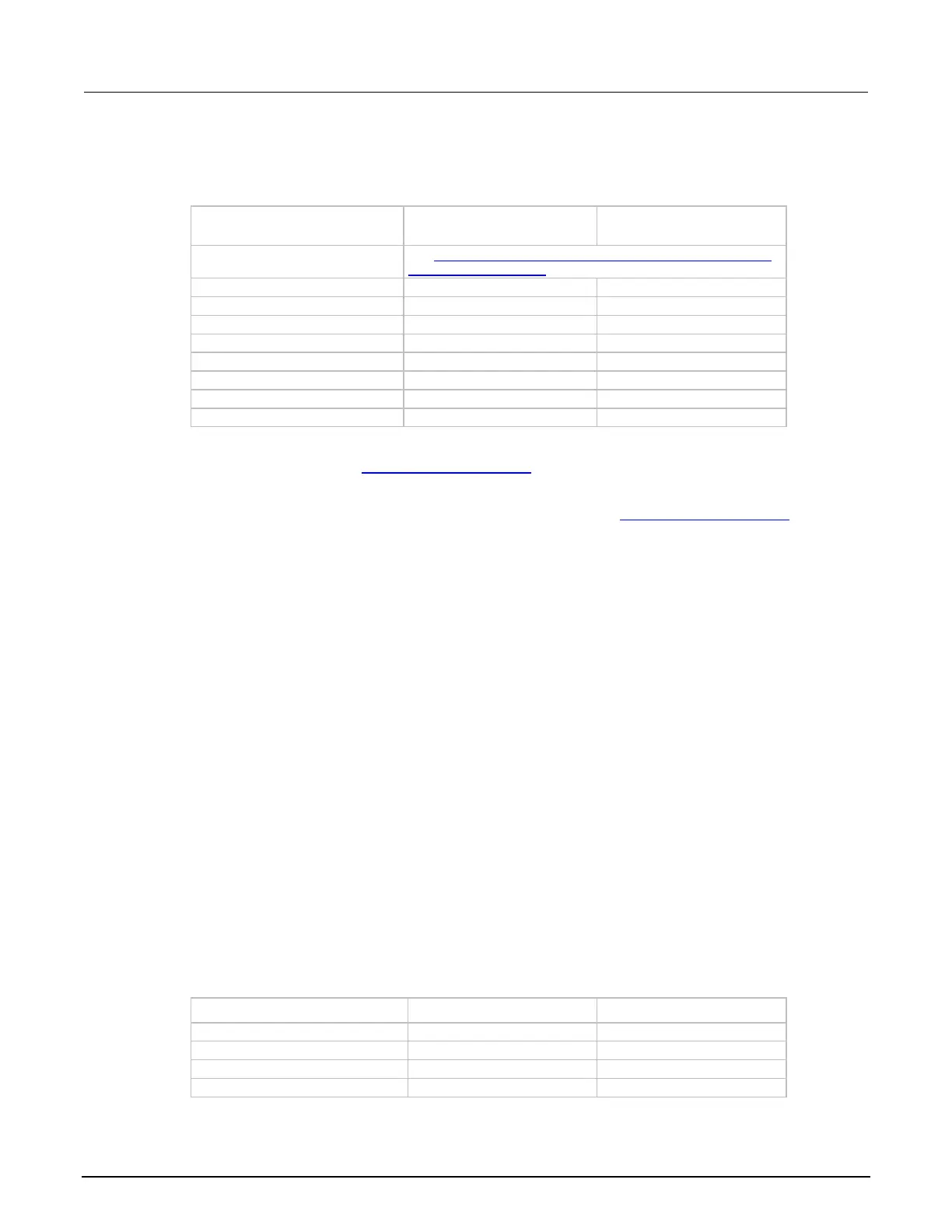